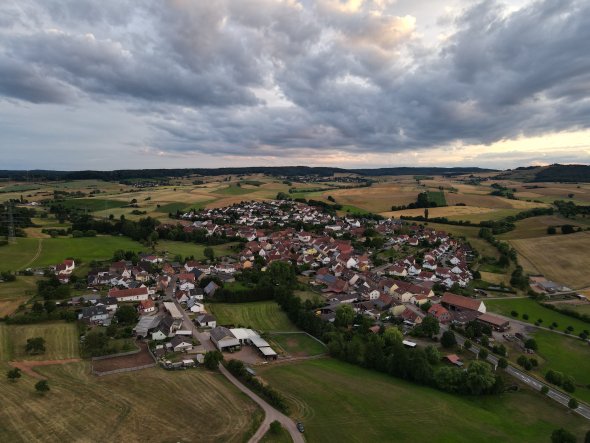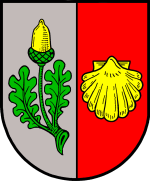Geography and history of the local community of Lohnsfeld

Lohnsfeld is located in the Nordpfälzer Bergland southeast of the Donnersberg. Lohnsfeld also includes the hamlet of Schmitterhof and the residential areas of Krupp'sche Ziegelhütte and Pulvermühle.
1190 "Sacerdos Cunradus de Loginsfeld" attested in a document; 1327 Lohnsfeit, 1486 Lanßfeldt; 17th/18th century Lohnsfeld.
Until the end of the 18th century, Lohnsfeld belonged to the county of Falkenstein.
After 1792, French revolutionary troops occupied the region and annexed it after the Peace of Campo Formio (1797). From 1798 to 1814, the village belonged to the French department of Donnersberg and was assigned to the canton of Winnweiler. As a result of the agreements reached at the Congress of Vienna (1815) and an exchange treaty with Austria, the region became part of the Kingdom of Bavaria in 1816. From 1818, the municipality of Lohnsfeld was assigned to the Kaiserslautern state commissariat in the Bavarian Rhine district, later to the Kaiserslautern district office, from which the district of Kaiserslautern emerged in 1938.
After the Second World War, Lohnsfeld became part of the newly formed state of Rhineland-Palatinate within the French occupation zone and belonged to the district of Rockenhausen in the administrative district of Palatinate. Since 1969, the municipality of Lohnsfeld has belonged to the Donnersberg district and since 1972 to the municipality of Winnweiler. (Q: Wikipedia)
Coat of arms of the local community of Lohnsfeld

Split in silver and red, in front a green oak branch with two green leaves, central green fruit cup and golden acorn, behind a golden pilgrim's shell
Explanation: The motifs of the Lohnsfeld coat of arms go back to the court seal of the court of Lohnsfeld and Potzbach, which has been handed down from the 16th century. The oak branch is a court symbol of the county of Falkenstein, where it appears in a large number of old court seals; the pilgrim's shell stands for St. James, who has always been the patron saint of the church in Lohnsfeld. It was not until May 1983 that the coat of arms first published by heraldist Otto Hupp in 1928 was adopted or approved by the district government. (Q: Wikipedia)